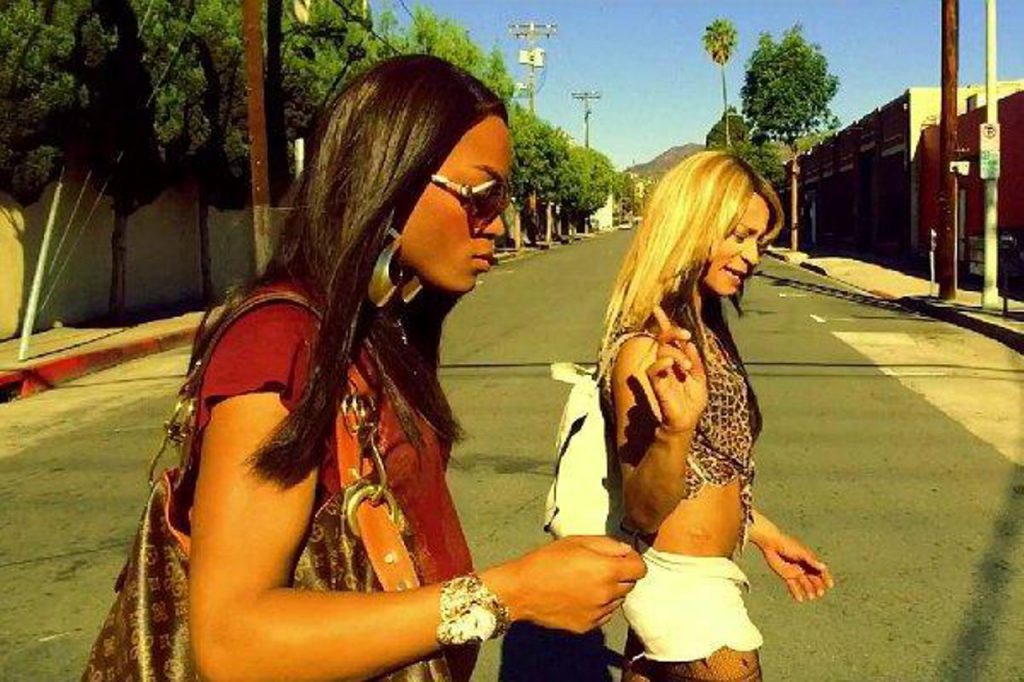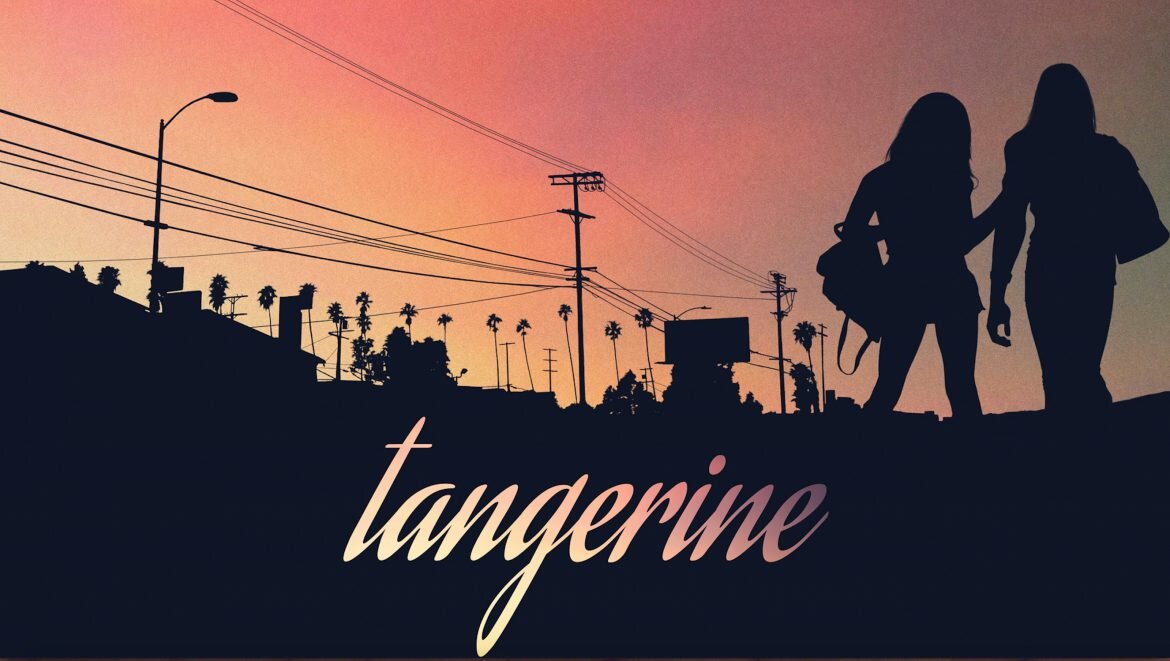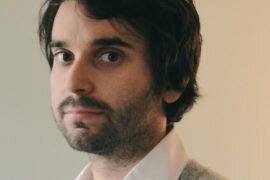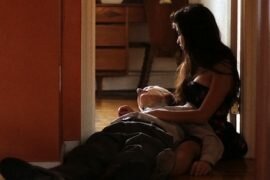Tangerine (2015) is loud and brash and bright, a highly-saturated but also exquisitely beautiful account of strange encounters, the LA underbelly and female friendship. Shot entirely on an iPhone 5s, Sean Baker’s film focuses on one Christmas Eve in the lives of two trans sex workers – Sin Dee Rella and her best friend Alexandra. Here is our interview with Tangerine director Sean Baker.
Interview by Sophia Larigakis
Can you tell me about the title ‘Tangerine?’
Tangerine is just the one title we kept coming back to. It’s not supposed to be literal… but simply referencing the feeling and sense one gets when thinking of the fruit and color. It is also the dominant hue of the film.

I’m interested in your subversion or disavowal of LA iconography. By setting the film on Christmas Eve, the mise-en-scène is characterised by the uncanny pairing of Christmas lights and the LA sun, instead of the traditional filmic indulgence in palm trees and beach scenes when filming LA. Can you talk a little about this?
This comes from an organic place because quite honestly, I wasn’t very aware of the contrast to traditional LA iconography. I was trying to tell a story grounded in reality and focused on a specific location. This location simply didn’t provide those images that we’ve been hammered over the head with over the years. Instead we see what some people call a “seedy side.” But I don’t see a seediness, I see beauty, colour and life. So I think I was simply interested in capturing that beauty that I saw in this wonderful city.
However, it was important to me that I showed subways, buses and cabs. I was always struck by the lack of images in film of LA’s public transportation system. Millions use it everyday but we never see it. That part was intentional.

My favourite scene is when Alexandra is singing in Mary’s in front of a red velvet stage curtain. Her muscles and skin are glowing in this really beautiful way. This scene reminds me of David Lynch’s filmic affinity for female singers in front of red velvet curtains. Can you talk a bit about the role of ‘spectacle’ or ‘performance’ in ‘Tangerine?’
I changed style drastically in this scene because I wanted to get in the head of Alexandra. This was the one scene that was carefully lit, locked down and slightly surreal. Mya Taylor asked to perform in the film and quite honestly, I wanted her to shine. I wanted this scene to not only be a spotlight on Alexandra but also on Mya Taylor, the actress.
To your question about spectacle… I’d say that this is obviously buried in the subtext… how aware of it we were during writing, I’m not sure because I feel that over-analysis in the writing process is dangerous. So we avoid it. But regarding spectacle in the subtext, there is a desire from every character in this film, including minor supporting characters, to be noticed and recognised. And they all express it in various ways and degrees of public display.

‘Tangerine’ is highly saturated in every way – its colours, its music, its shots, the intensity of its dialogue. Watching it is like jumping into a beautiful carnival abyss. What was the intention behind this formal choice?
The environment was rubbing off on me while we were shooting. I think that the energy of the film came from the energy of the location. It was colourful, loud and dangerous… and that’s what I think the film eventually became. Again, not so intentional. It came from an organic place because the style was found along the way… even far in to post-production.
You’ve mentioned that shooting ‘Tangerine’ with an iPhone helped to lessen the intimidation factor for the film’s non-professional actors. Many are calling ‘Tangerine’ a turning point in favour of the ‘democratisation of cinema’. Is it? Or is it an American-style ‘democracy’ that is inextricably tied to the corporate world (Apple Inc. for example) and the patriarchal voice?
Good point. Perhaps it is an American-style democracy. And there’s no denying that my act of using the iPhone is feeding corporate culture. However, that was a side effect to me using what I had to make my film. I was taking advantage of the only opportunity I had. So, yes, it’s sad, because ultimately I’m supporting the machine while trying to say something about it. That’s capitalism and that’s what’s making movies today.

I respect that you always acknowledge your privilege (and limitations) as a white cis-male filming a world that you are not a part of in any way (the world of trans POC sex workers in downtown LA). Do you see this kind of ‘anthropological’ technique – picking an ‘Other’ to observe and describe – to be problematic? Do you think that the strength of the stars’ (Kitana Kiki Rodriguez and Mya Taylor) voices and autonomy within the film absolve you in the face of this critique?
I don’t see it as an ‘anthropological’ technique. Quite the opposite actually. I picked a location, not an ‘Other.’ Yes, I’m a white cis-male from outside of this world and I was quite aware that I’d be bringing an outsider’s gaze to this subject no matter how much I collaborated, researched, immersed, etc. I knew that going in to this, all I could do is approach this subject with respect and responsibility… and hope that ultimately the film finds universal truths.

What did Mya and Kitana – and filming ‘Tangerine’ in general – teach you about female friendship?
This is my second film about female friendship and I’m still not sure I can articulate what defines it. I guess, in the end, female friendship is real friendship. It’s about support and being there when someone feels the world has looked the other way… and with the sisters from this neighbourhood, the world really has.





I enjoyed this interview. The questions led to substantial responses about approach and artistic intention.